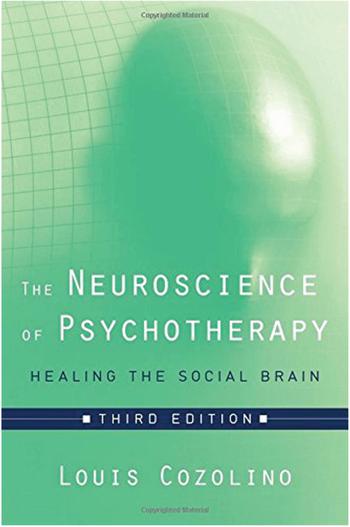I approached this third edition of Neuroscience of Psychotherapy: Healing the Social Brain with some reluctance. I had purchased the first edition with the catchy title Neuroscience of Psychotherapy: Building and Rebuilding the Human Brain. How much change is needed to justify another edition of a large textbook with an equally ambitious title? How many extra bits would there be to justify the additional expense of a new book? In fact, the reference section alone has been tripled to keep up to date with the continuing development of knowledge.
The author attempts to persuade the reader that the considerable advance in neuroscience should inform our work as psychotherapists and was keen to encourage us to consider ourselves both psychotherapists and neuroscientists. He has a persuasive and enthusiastic approach and it made me think that perhaps the psychotherapy section of the Royal College of Psychiatrists would embrace the term ‘consultant psychotherapist and neuroscientist’.
He quotes Freud's entreaty that ‘all of our provisional ideas in psychology will presumably one day be based on an organic substructure’ and makes considerable attempts to demonstrate that we are somewhere near this point.
Being retired, I do not read proper books and mostly stick to frivolous fiction on the Kindle. If anyone is going to make the effort to read such a sizeable book it must be a special experience, and this was a treat. It is a beautiful book to read in many ways. Physically it is substantial, it has lovely smooth white paper (early edition had the colour and consistency of a recycled toilet roll). The sections are in readable, essay-sized chunks headed by pertinent quotes from social, literary and scientific sources, with a summary at the end of the chapter. The author writes in a chatty and accessible fashion with sometimes slightly disquieting ‘baby’ words: ‘mama rat’ and ‘booboo’.
Clinical examples abound illustrating the neuroscience in a thoughtful and understandable fashion and exemplify the author's approach to using the knowledge of neuroscience to the benefit of his psychotherapy patients.
The author has a vast knowledge of research pertaining to neuroscience and psychotherapy. However, I have some concern about his extrapolation of neurobiological, animal experiments to humans and the likely impact of psychotherapy. I was convinced by the many statements that were backed up with scientific references, but a few were standard psychotherapy principles with no more references than the usual psychotherapy-based ones. For example, the Winnicottian concept of primary maternal preoccupation is stated in a way as to suggest a neuroscientific equivalent exists, but only Winnicott's work is referenced.
Despite this small misgiving, and even if I think he exaggerates the role of psychotherapy (a neurobiological intervention with a deep evolutionary history), there is no doubt that psychotherapists would benefit from understanding the neurobiology underpinning their interaction with patients. It would be helpful to correct our outdated undergraduate teaching and to realise that the brain is not just a bunch of neurons you start up with and can only lose thereafter (or is only me that still believed that?). Neurogenesis in the areas of the brain associated with new learning and the implications of this for psychotherapy are huge, and the author shows how this knowledge can be used to help patients in a psycho-educational and therapeutic approach.
Essentially, this is a ‘must read’ for psychotherapists of the 21st century.




eLetters
No eLetters have been published for this article.